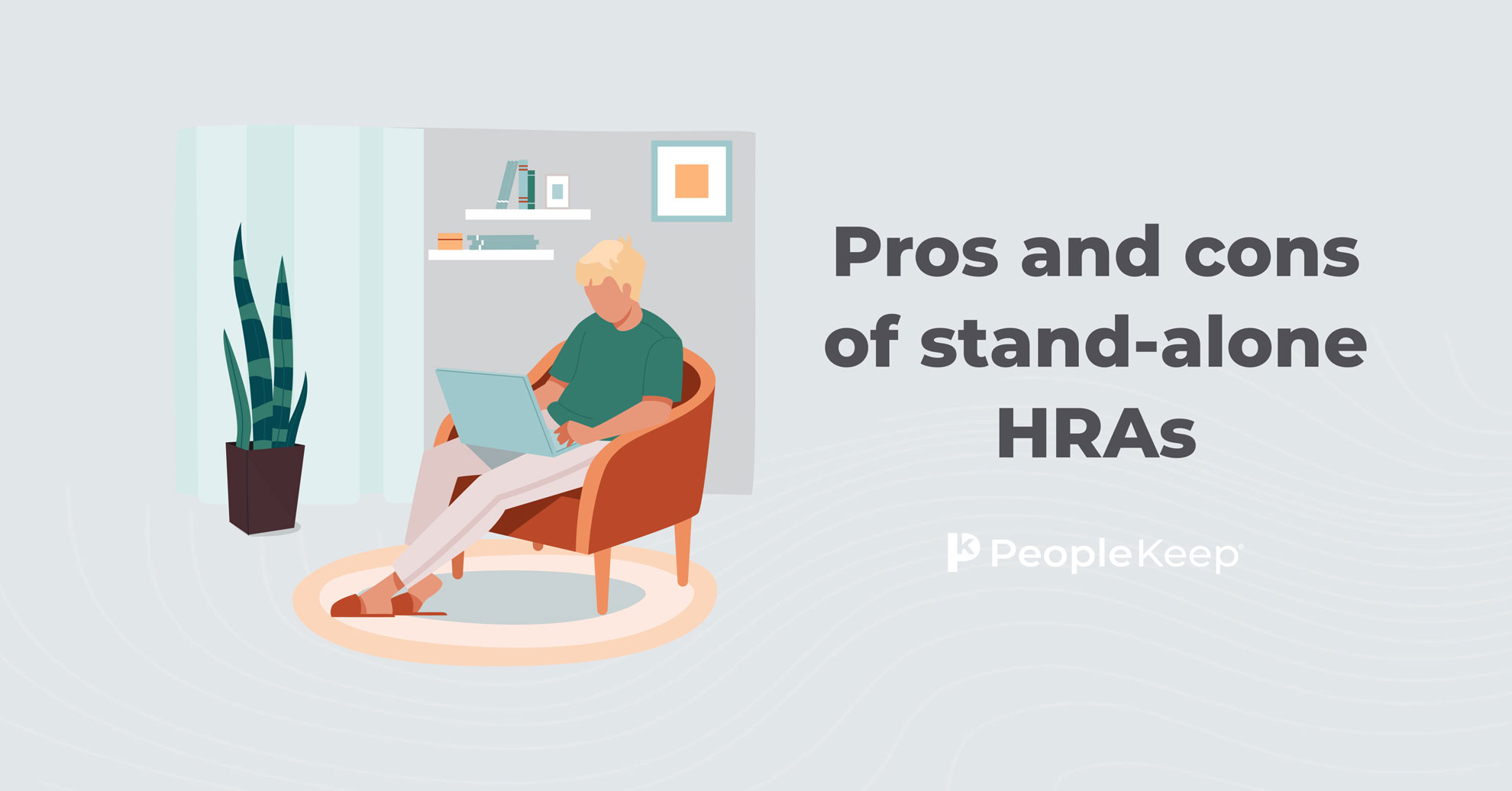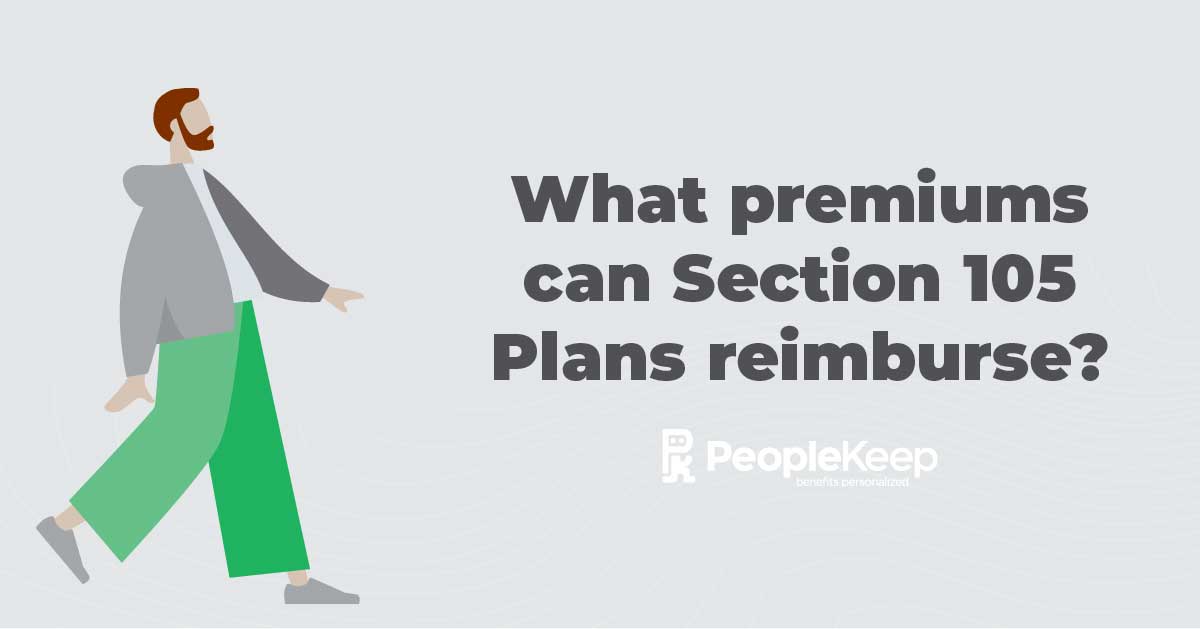Why Don't All Businesses Use HRAs?
By PeopleKeep Team on November 21, 2012 at 11:00 AM
Today, HRAs powering standalone defined contribution plans (DCP) are a solution for millions of small employers unable to afford and/or administer a group plan. However, from 2002 to 2011, it is esimated that less than 10% of U.S. Businesses adopted HRAs, or Health Reimbursement Arrangements. This relatively low level of growth and penetration during the first ten years of HRAs is surprising given the flexibility and benefits that HRAs provide to both employers and employees. However, until now, four problems, none of them related to the HRA itself, prevented employers and employees from fully benefiting from HRAs.
1. Limited HRA Administration Technology
Employers are generally required by HIPAA to use Third Party Administrators (TPAs) or third party claims processing for health benefits administration. When required to administer HRAs, most TPAs utilized their existing systems and processes, which were designed to administer simpler FSAs or group health plans.
These legacy systems often relied on manual, paper-based processes that create a significant time lag between the time that employees submit receipts and the time they are reimbursed. Additionally, most TPAs required employers to “prefund” part of their HRA contributions, much as they do for FSA contributions or group plan premium payments. This practice artificially raises the cost of the HRA and takes away one of the primary benefits for employers—no funding of HRA reimbursement until, and if, an employee submits an approved claim.
2. “Free” Carrier-Integrated HRA Administration
As employers learned about the benefits of combining HRAs and much less expensive high deductible group health plans, some insurance carriers saw employer-managed HRAs as a competitive threat to their low-deductible group insurance business. To protect this business and meet their customers’ demand for HRAs, some carriers acquired or developed limited-feature HRAs as options to their group health benefits product offerings for both fully and self-insured plans.
Importantly, these carriers did not build a separate HRA claims administration process, but “bolted-on” the HRA to their existing claims administration systems. This made the HRA easy for employees to use and reduced the need for employees to pay for healthcare expenses directly because the carriers could obtain payment directly from the HRA.
However, employers who used carrier-integrated HRAs did not realize several key HRA benefits. First, for fully-insured plans, carrier-integrated HRAs limited the expenses for which the HRA can be used to only those expenses that would have been covered by their health insurance program (i.e. “EOB items”), but were not because of the higher annual deductible. This prevented employees from having coverage for medical expenses that might improve their overall health (e.g. alternative medicine, weight loss, smoking cessation) and prevent costly future medical expenses.
Second, it reduced the ability of the HRA as a tool to drive consumerism. Employees did not personally pay for their own expenses, notice the cost of their care, and then seek reimbursement. Rather, funds were seamlessly transferred among accounts by the carrier, preventing employees from being fully engaged in the cost of their care. Some employees never realized that the HRA even existed.
Third, using a carrier-integrated HRA made it more difficult for employers and employees to switch insurance carriers in response to increasing premiums or network coverage limitations. (This may be another reason why insurance carriers sought to create and control the employer HRAs.)
Finally, using a carrier-integrated HRA disqualified most employees from having an FSA and/or an HSA. HRAs must be carefully integrated with FSAs for both compliance and consumerism. IRS regulations state that employees must exhaust all HRA funds before receiving reimbursement from an FSA, unless the HRA plan document states that the FSA funds should be exhausted first. But unless a carrier-integrated HRA is integrated with the FSA administrative platform and reflects such requirement in its plan document, it cannot meet this requirement. The inherent design of a carrier-based HRA (i.e. paying indiscriminately for under-deductible EOB expenses) typically makes it also legally incompatible for the participant to also have a Health Savings Account (HSA).
3. Heavy Promotion of Health Savings Accounts (HSAs)
Although HRAs were created in 2002, a year before HSAs, the consumer-based HSA dominated health benefits news from 2003-2007. Banks, brokerages, and mutual fund companies heavily marketed their HSA offerings to earn fees from managing additional funds. Also, the White House promoted HSAs as part of President Bush’s healthcare reform initiatives.
Once they adopted HSAs, many employers and insurance carriers took a wait-and-see attitude on HSAs before adopting HRAs, especially because TPAs and insurance carriers had not yet developed technology and business methods to make their HRAs “HSA-compatible[10].” Employers who did offer high deductible HSA options to their employees were surprised by low (3%-10%) adoption rates, now attributed to the complexity of the HSA product itself.
4. Misconceptions about HRAs and Individual Health Insurance
Some of the first employers attracted to HRAs had no group health plan, or had recently cancelled or planned to cancel their group plan. These employers desperately needed an immediate solution to retain and recruit employees, and lived in the 45 states where personal health insurance policies were medically underwritten and thus much less expensive than group policies for healthy employees.
However, when these employers contacted vendors for help, they were often told by misinformed TPAs, agents and insurance carriers that employers could not reimburse employees for individual health insurance.
Although the U.S. Department of the Treasury (IRS) now allowed reimbursement of employee personal health policy premiums, TPAs had not yet developed the technology and business methods required by the U.S. Department of Labor to enroll employees in personal policies and reimburse employees for individual health insurance policy premiums, without violating HIPAA and ERISA regulations concerning employer group plans and health status discrimination. For example, under ERISA an employer may require that an employee obtain health insurance to participate in its HRA, but, if there is no guaranteed-issue employer group plan, in order to avoid discrimination, the HRA must have a process for waiving this requirement if an employee is charged more or denied personal policy coverage due to their health status.
Moreover, because small employers had been disproportionately hit by rising group health insurance costs many of these employers were very small. Not only had TPAs not yet developed federally-compliant methods to distribute personal policies and reimburse for personal policy premiums, TPAs had also not yet developed systems to economically distribute and administer HRAs to a very large and fragmented base of small employers.
Insurance agents and insurance carriers were the most misinformed. As previously explained, in the 1990s some personal policy carriers had added a question on their applications asking if the premium was being paid for by an employer. Agents and some insurance carrier executives often misunderstood this to be a blanket restriction on premium payment or reimbursement by employers, rather than a question only relevant to employees of smaller employers in certain states.
Conclusion
The 2012 reelection of President Obama has brought certainty and clarity to the U.S. business health insurance market. Finally, employers and their health insurance brokers have the information they need to make the best decision for their business and their employees regarding employee health benefits for 2013 and beyond.
The best decision for most employers and their employees will be to eliminate their company-sponsored health insurance in favor of a defined contribution HRA solution. That’s because employees no longer need employers to purchase quality health insurance, and, starting in 2014, employees earning less than 400% of the FPL (~$92,000 for a family of four) per year who purchase a personal policy will receive a large federal subsidy on their premium if their company doesn’t offer a group plan.
Check out more resources
See these related articles

Pros and cons of stand-alone HRAs
Stand-alone HRAs can offer flexibility and control over healthcare expenses, allowing employers to customize plans to meet their employees' needs.

2026 employee benefit plan contribution limits
Learn the 2026 employee benefit plan contribution limits for HRAs, HSAs, 401(k)s, and more. Stay informed to maximize tax advantages and savings.

What health insurance premiums can Section 105 plans reimburse?
Discusses the types of health insurance premiums Section 105 plans can reimburse.


